40 Best GBA RPG & JRPG Games Of All Time (Ranked & Reviewed) – FandomSpot
Nintendo’s Game Boy Advance was a revolutionary handheld console, putting the power of 32-bit architecture in the palm of your hand.
Not only did the GBA inspire developers to create some of the most amazing RPGs of the generation, but it was more than powerful enough to support remakes and ports of classics.
Sure, it was made for on-the-go play.
But with so many fantastic RPG titles featuring absorbing storylines and complex battle systems, it’s no surprise many of us spent hours on the living room sofa looking at that tiny screen.
And people wonder why so many kids have bad eyesight nowadays.
Whether you’re on a trip down memory lane or are stuck at grandma’s with only your old GBA to keep you company, here are the most incredible RPGs to play on this classic handheld.
40.
Shining Soul (2003)
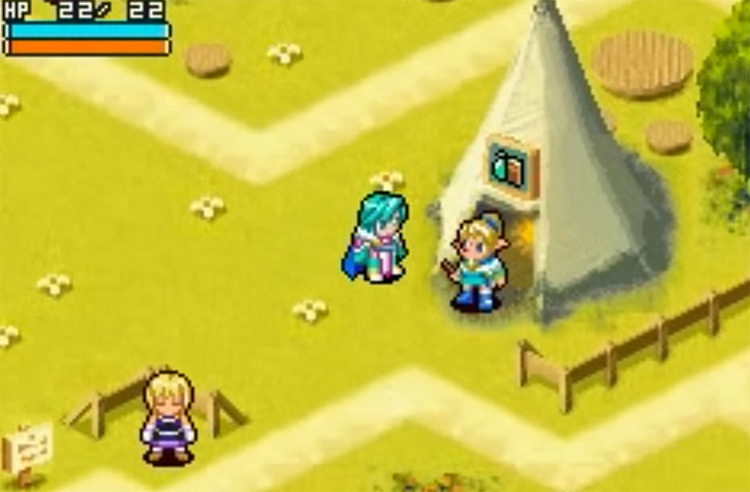
Developed by Nextech and Grasshopper Manufacture, Shining Soul is an Action RPG with hack-and-slash gameplay that lets you decimate your enemies with both melee weapons and magic abilities.
It takes place in Rune, where the Dark Dragon has gathered an army of darkness to destroy the world.
The player takes control of the hero of the Shining Fleet, as they prepare to strike down the beast.
The thing with Shining Soul is that, despite many of us remembering it fondly, it’s not that great a game. The story feels bland, and its RPG elements are somewhat lacking.
39.
Shining Soul 2 (2004)
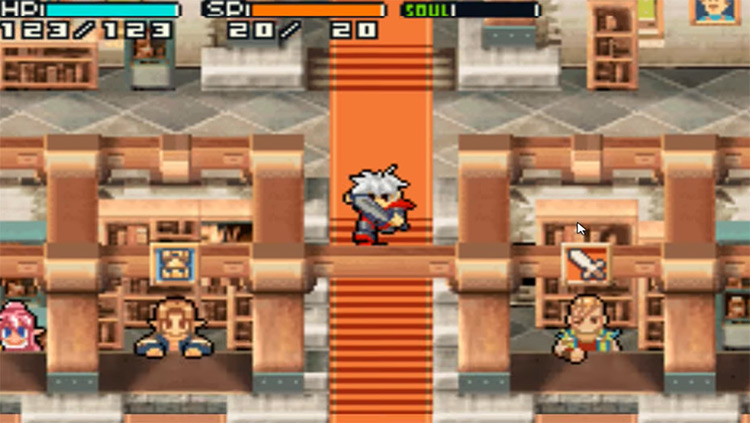
Its sequel was a considerable improvement, with a somewhat enhanced combat system, better RPG mechanics, and a much better storyline.
After a great victory over darkness, the balance between dark and light tipped too much toward the luminous side.
This eventually led to strong dark forces’ resurfacing, and it’s up to the hero to stop them.
It’s important to mention that this game has little to do with the original Shining Soul, as it takes place centuries later.
38.
Monster Rancher Advance 2 (2002)
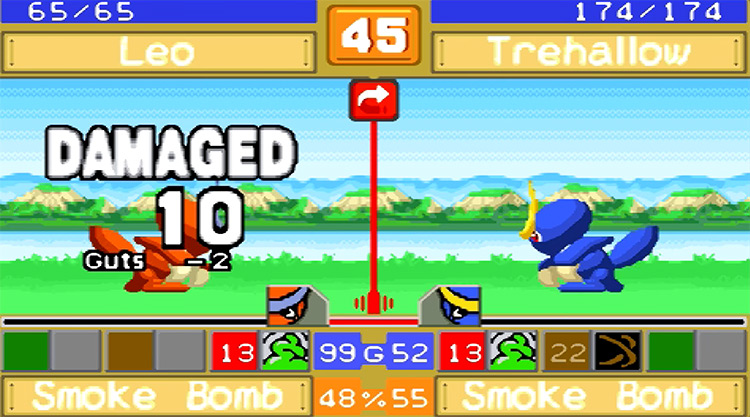
After the massive success of the original Pokémon games, many franchises started offering the same monster raising and battling formula, such as Tecmo’s Monster Rancher.
Monster Rancher Advance 2 allows players to take the role of a monster breeder and participate in competitive battles against rival breeders to become the ultimate monster rancher.
Other than its engaging gameplay, it shines for its replayability.
37.
Phantasy Star Collection (2002)
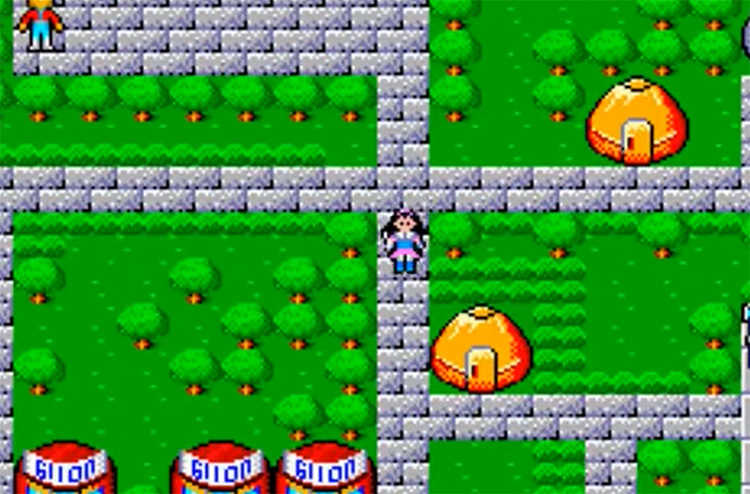
Phantasy Star is one of the most influential and often innovative RPG series of the genre’s early history, and this collection brings the first three adventures to the palm of your hand.
Explore the planets of Palma, Motavia, and Dezolis, uncovering dark secrets and experiencing some of the biggest plot twists you can get on a GBA title.
36.
Super Robot Taisen: Original Generation 2 (2006)
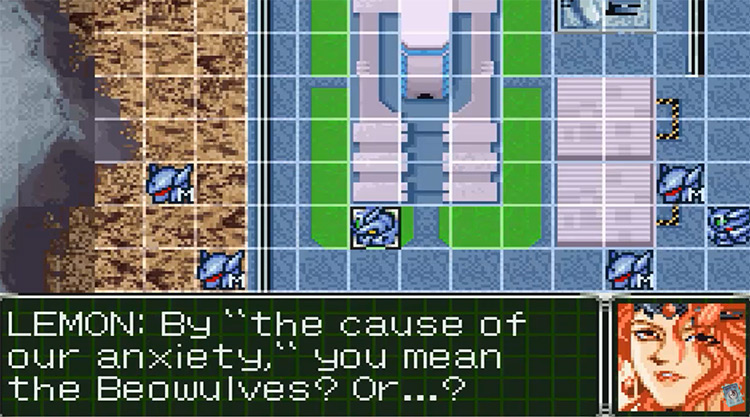
Giant battle robots aren’t exactly the most common sight in the RPG genre, but Super Robot Taisen: Original Generation 2 has enough such content to keep you busy for a long while.
This Tactical RPG by Banpresto features over 40 different scenarios, including story elements from a wide variety of past games and even an original manga.
The graphics are nothing to write home about.
And it’s not the best Tactical RPG in the GBA.
But saving the day in badass mechas still sounds like a fun time.
35.
Onimusha Tactics (2003)
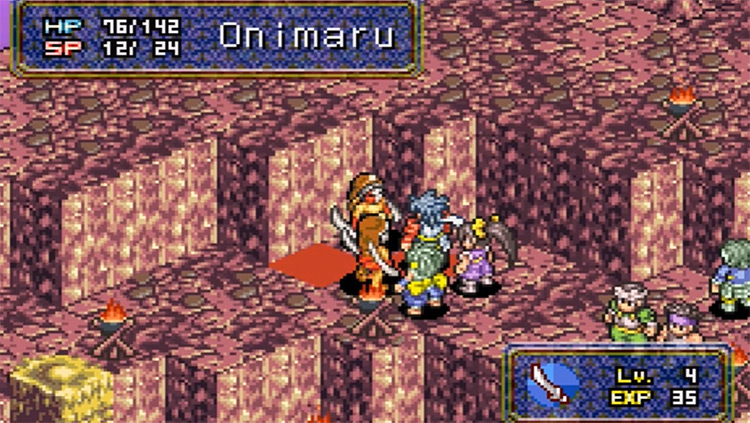
Onimusha Tactics takes the same art style and overarching setting as Onimusha: Warlords on the PS2 and applies it to the Tactical RPG genre.
In this game, the main character Onimaru uses the Oni Gauntlet to lead his warriors against Nobunaga and his army of Genma.
In a genre dominated by high fantasy storylines set in medieval European settings, Onimusha’s Eastern aesthetic is a breath of fresh air.
34.
DemiKids Light (2003)
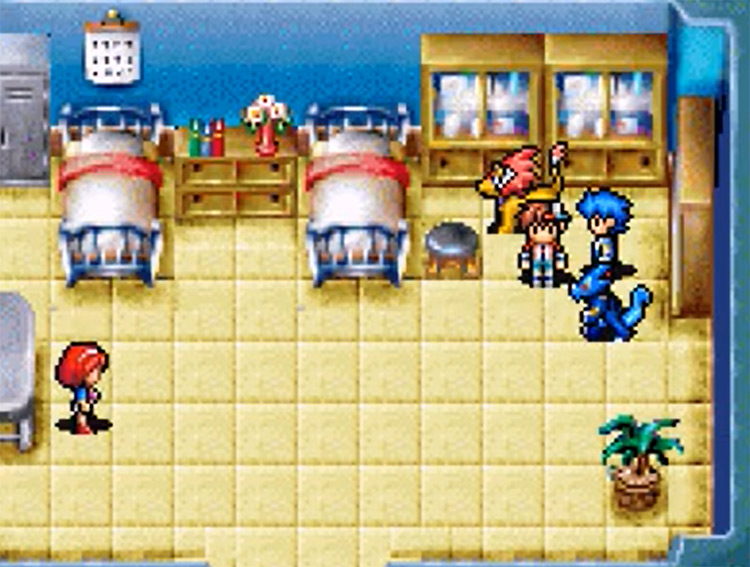
Also known as Shin Megami Tensei: Devil Children, DemiKids is a slightly simplified, more kid-friendly spin-off of the main Shin Megami Tensei series.
Like most SMT titles, it focuses on dungeon crawling and has a unique battle system that lets you talk to the enemy to recruit them.
Given how similar this mechanic is to, say, catching a Pokémon, it’s no wonder they decided to jump in on the “two versions of the same game” bandwagon with DemiKids Light & Dark.
33.
DemiKids Dark (2003)
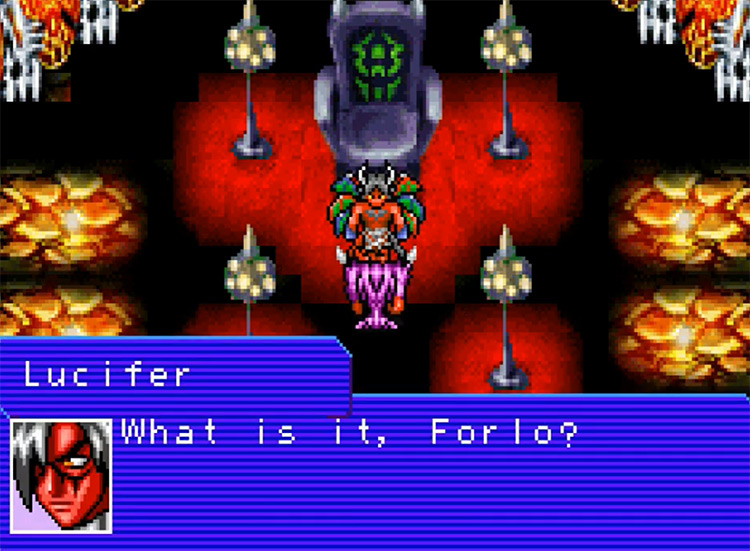
The games both have a surprisingly deep storyline for a game marketed to kids.
And the one in the “Dark” version of the game is the kind of thing that would have caused a big scandal had it become trendy.
That’s because the game literally has you fighting your way to Lucifer to ask him to help stop the end of the world.
Luckily, that never really happened.
So we can enjoy the excellent gameplay and great soundtrack without reliving any unsavory memories.
32.
Zone of the Enders: The Fist of Mars (2002)
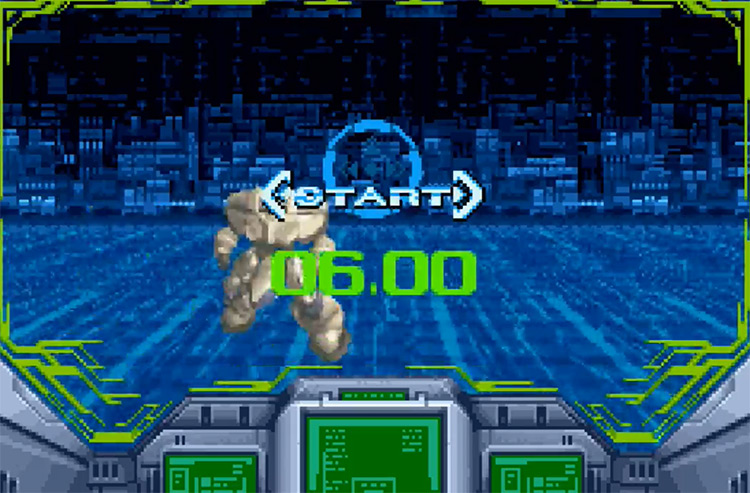
Developed by Winkysoft for Konami, Zone of the Enders: The Fist of Mars is one of the few examples of a mecha-focused series shining for its storyline rather than just the giant robots.
The story, which is divided into 26 episodes much like an anime series, follows a young worker on an interplanetary cruise that crash-lands on the surface of Mars, a mining planet.
After being blamed for the attack, he’s rescued by the Anti-Terrestrial League, which fights discrimination against “Enders” – humans born on mining planets.
With a deep storyline addressing sociological themes and multiple endings depending on your actions, it’s easy to get lost in the game’s drama.
31.
Final Fantasy I & II: Dawn of Souls (2004)
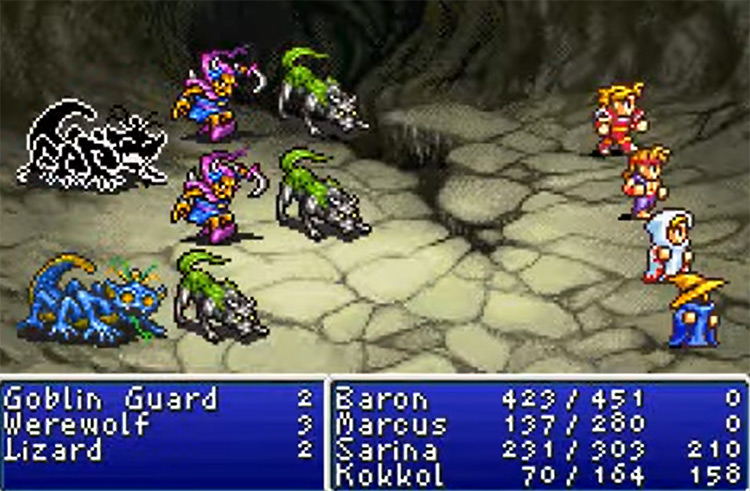
I’m a fan of remakes and re-releases of established classics, and one of the best ways to experience the first two installments in Square’s Final Fantasy series is this compilation on the GBA.
Other than bringing the classic NES experience to the palm of your hand, Dawn of Souls also introduces several small changes to gameplay, an updated Bestiary, and four additional dungeons to beef up the decade-old game.
30.
Lunar Legend (2002)
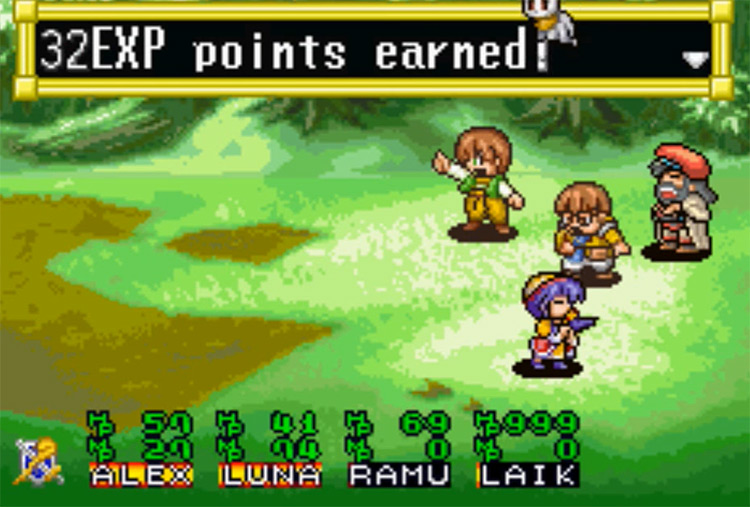
If you’re into the “classic” turn-based RPG gameplay and revel in the genre’s tropes, then Lunar Legend by Japan Art Media is something you can’t ignore.
It’s a re-telling of the original Lunar: The Silver Star, released in 1993 for the SEGA Mega CD, which featured a profoundly engrossing storyline that justifies playing the game even if you’re not a fan of the genre.
While the game’s graphics and gameplay remain primarily unchanged, Lunar Legend does add a “Critical System” to combat, which helps spice things up in such a true-to-form turn-based RPG.
29.
Yggdra’s Union: We’ll Never Fight Alone (2006)
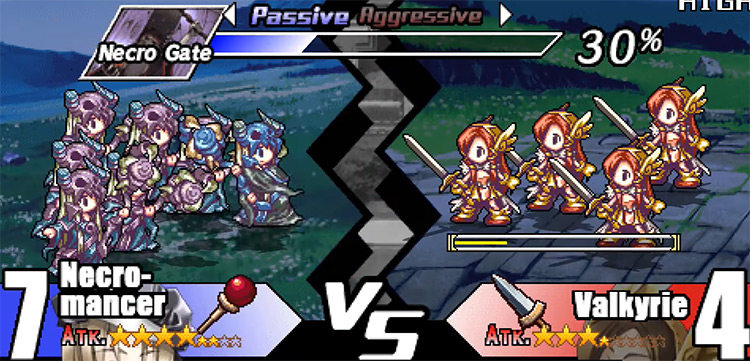
If you’ve ever played Yggdra’s Union, you know it’s one of the hardest RPGs on the GBA, featuring a unique battle system that has you controlling armies rather than individual characters.
Most of the game’s difficulty lies in learning the ropes of the morale-based combat.
And the game has no intention of going easy on you during those first baby steps.
This uniqueness is to be expected from the second game in Spike’s “Dept. Heaven” series, which focuses on bringing a more unusual experience with each release.
28.
CIMA: The Enemy (2003)
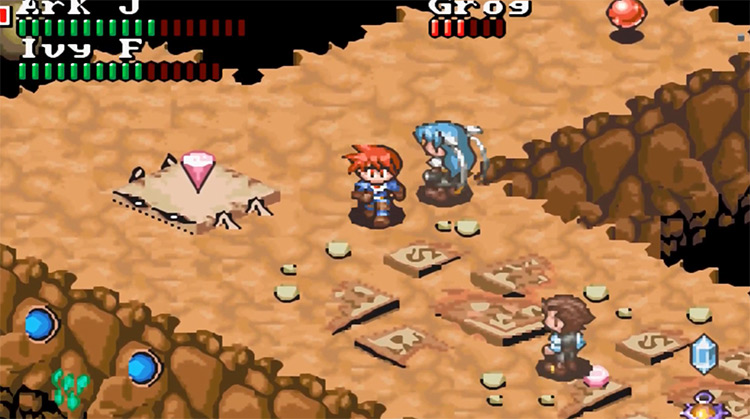
In Neverland’s CIMA: The Enemy, you’re part of an organization trying to protect people from being abducted by the “Cima”, mysterious alien lifeforms.
While combat in this Action RPG is nothing out of the ordinary, your objective in each mission is.
You’ll have to manually lead a group of survivors through enemy territory, telling them where to go, where to stand, and protecting them as they move in real-time.
It’s peculiar but engaging, and the missions are varied enough that the gimmick never gets old.
27.
Mega Man Battle Network 5: Team ProtoMan/Team Colonel (2004)
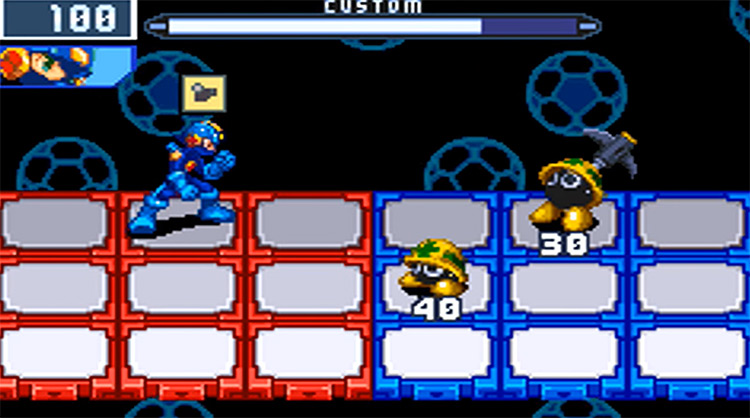
The classic Mega Man X games were one of the building blocks of my early childhood, and the Mega Man Battle Network series on the GBA married my growing interest in JRPGs with my childhood icon.
This real-time Tactical RPG features deep customization options and a fast-paced battle system that uses a deck of “chips” giving diverse powers to MegaMan whenever they’re used.
The fifth installment in the series is far from the best in terms of gameplay.
But the darker tone of the storyline was pretty exciting as a teenager. Puzzles are as complex as ever, and the visuals are top-notch.
26.
Mega Man Battle Network 6: Cybeast Gregar/Cybeast Falzar (2006)
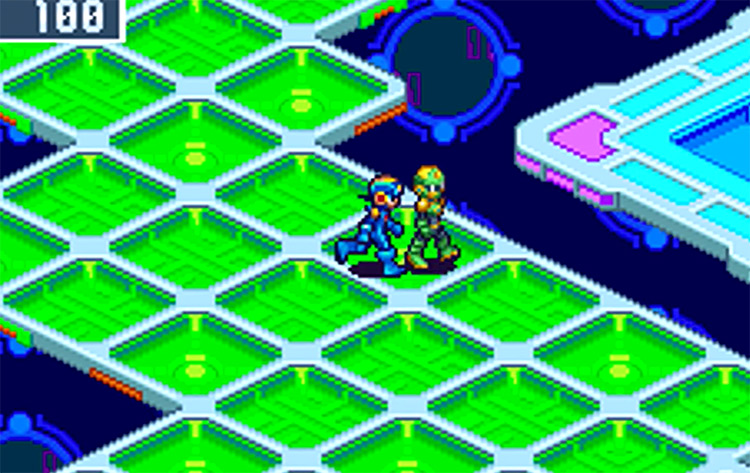
As the last entry in the Mega Man Battle Network series, the sixth installment was met with lukewarm reviews that accused the series of becoming stale after so many iterations.
While that may be true for the story, its gameplay is easily the most refined version yet.
It keeps the same level of deep customization and challenging battles that made the series famous, and additions like the Cross System and Beat Out mode are a cool way to keep it fresh.
The story is nothing special this time around, but it does serve to tie several plot threads present since the very first game, which gave fans a much-needed sense of closure.
25.
Mega Man Battle Network 3 (2003)
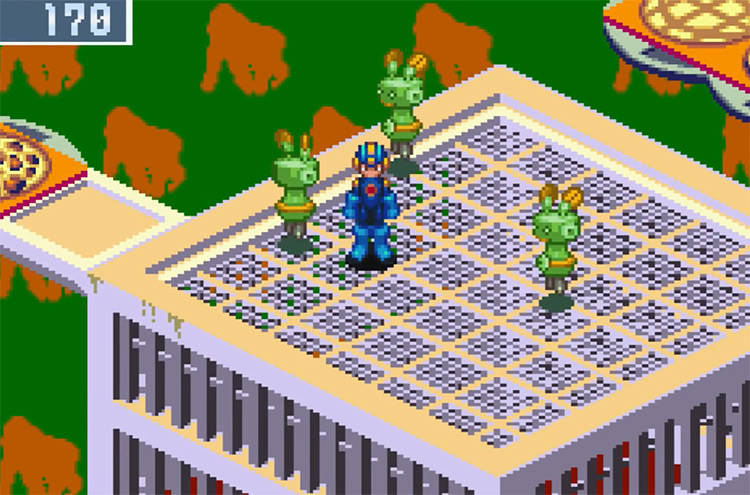
What makes the third installment in the Tactical RPG series stand out from the rest is the expertly-written story, easily the best one out of all six iterations on the GBA.
It follows Lan on his struggle to stop Dr. Wily and the evil WWW organization from releasing Alpha, a prototypical version of the Internet, bound to destroy society as they know it.
The music in this game does wonders for its most dramatic scenes, and it features one of the most emotional, heart-wrenching endings in the franchise… Well, almost.
I’d spoil it if I tried to explain.
24.
Boktai: The Sun is in Your Hand (2003)
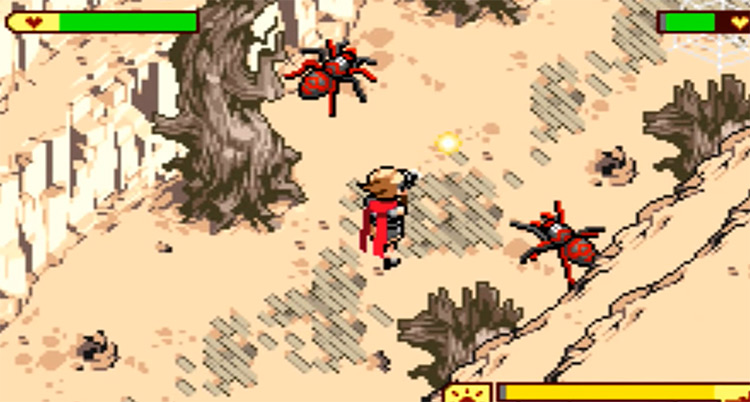
If you’ve ever played a Metal Gear Solid game or the more recent Death Stranding, you know celebrity game developer Hideo Kojima is all about experimentation.
A perfect example is Boktai: The Sun is in Your Hand, produced by Kojima, which includes a UV-light sensor on the game’s cartridge.
The more sunlight it gets, the more powerful protagonist Django’s “Gun del Sol” becomes.
Other than this unique gimmick, the game is a very competent and visually striking action-RPG that follows Django on his quest to cleanse the land of evil vampires (hence the weaponized sunlight).
23.
Boktai 2: Solar Boy Django (2004)
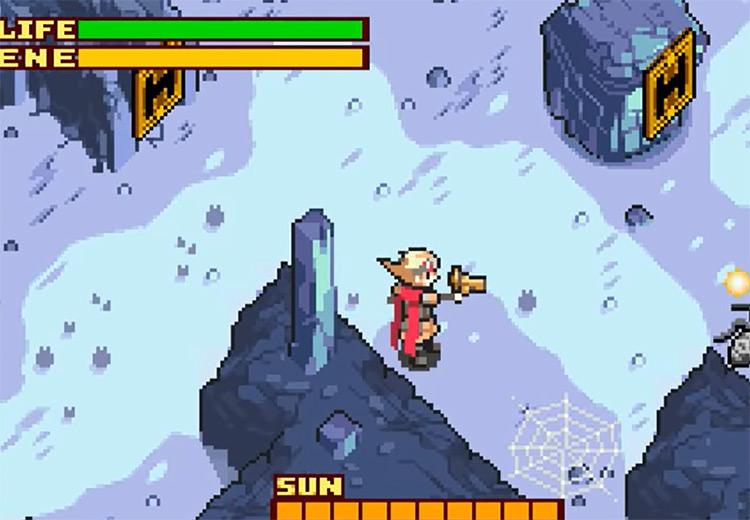
Django’s adventure continues in Boktai 2, which refines the gameplay and visual style to perfection.
After a vampire steals his Gun del Sol and his hometown of San Miguel is destroyed, Django must once again embark on a quest against the forces of evil.
The game keeps the UV-light sensor but replaces Django’s Gun del Sol for the Sol de Vice, a solar glove with the power to imbue melee weapons with sunlight.
This change makes fighting in this Action RPG much more up-close and personal, keeping it from feeling like a repetition of the original game.
22.
Final Fantasy IV Advance (2005)
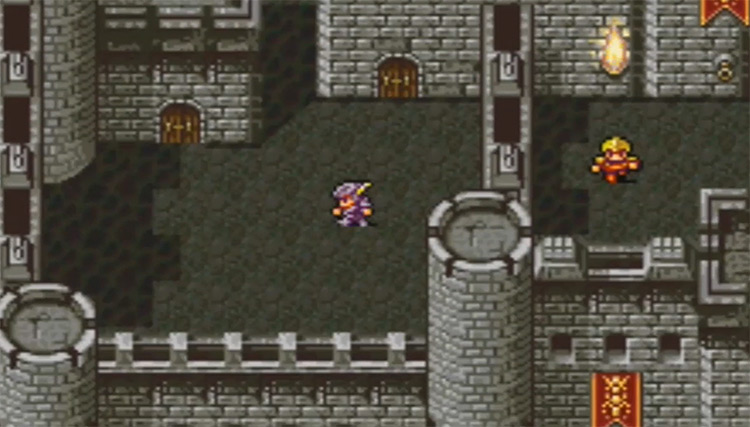
The GBA was every old-school RPG lover’s dream, as its 32-bit architecture and simple controls were ideal for remakes of NES and SNES classics, such as Final Fantasy IV.
This game was the first to introduce the ATB system to the Final Fantasy series, which has players inputting commands in real-time.
It was also the first one to give characters defined classes rather than letting you choose.
Final Fantasy IV is also one of the hardest entries in the series, so much so that an “Easy” version of the game was released on Japanese markets.
If you’re up to the challenge, you won’t regret playing this gem.
21.
Final Fantasy V Advance (2006)
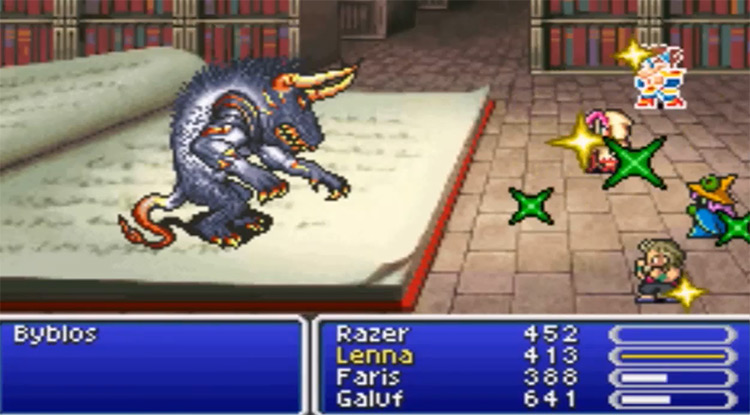
The fifth Final Fantasy game also received a magnificent remake for the GBA, letting newcomers and longtime fans experience Bartz’s adventure like never before.
While the ATB introduced by the previous game remains, this game re-introduces class customization in the form of a Job system.
The GBA version adds four new classes: the Gladiator, the Cannoneer, the Necromancer, and the Oracle. It also features a new optional dungeon with a new boss.
20.
Pokémon Mystery Dungeon: Red Rescue Team (2006)
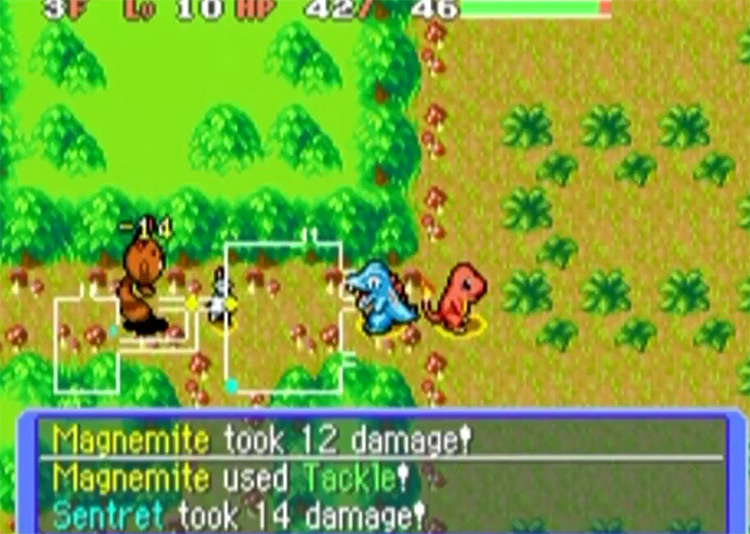
Pokémon Mystery Dungeon came out just as Nintendo was transitioning from the GBA to the NDS, so it was released on both consoles at the same time.
Red Rescue Team was the GBA version, bringing fans an entirely new Pokémon experience where the pocket monsters are the protagonists themselves.
They even talk!
Gameplay was also different from previous Pokémon games, taking the form of a roguelike dungeon crawler featuring randomly-generated levels – just like every other Mystery Dungeon title.
19.
Lufia, the Ruins of Lore (2003)
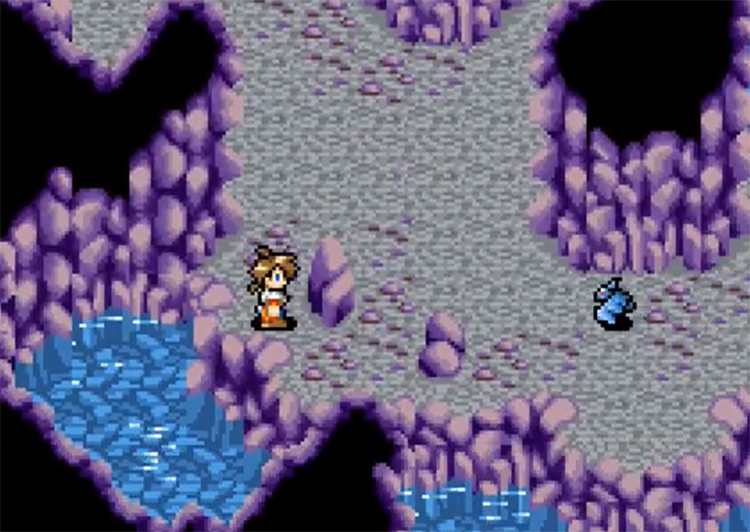
Making a game look good is only partially about the power of the console.
It has lots to do with creative thinking and game design, which is why I like Atelier Double’s Lufia, the Ruins of Lore so much.
While it’s most definitely a “traditional” turn-based RPG in terms of both story and the combat system, it successfully breaks the mold in many areas to stand out from the crowd.
For example, the perspective from which the battles are presented creates an illusion of depth and looks very dynamic.
18.
Breath of Fire (2001)
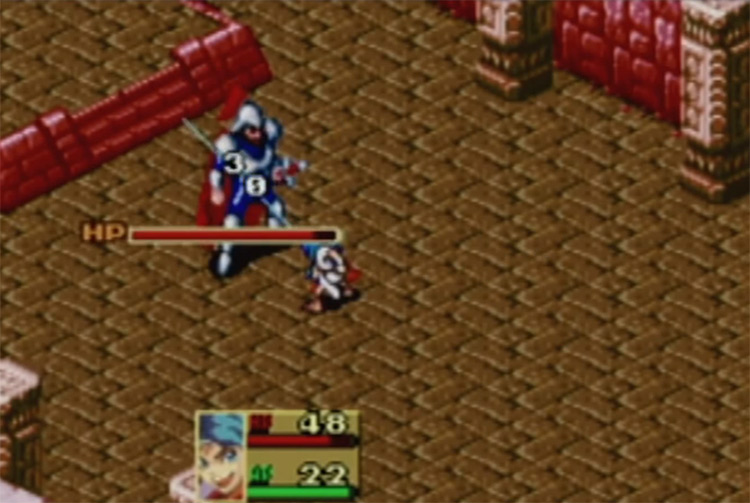
We’ve already covered many GBA ports of older titles, and we’ll discuss some yet.
But none can hold a candle to Breath of Fire in terms of improvements over the original game.
It’s not quite a remake, but the GBA version of Breath of Fire improves visuals by implementing a vibrant color palette and streamlines the game’s progression.
Anyone looking to get into Capcom’s long-storied RPG franchise should start here.
17.
Breath of Fire 2 (2002)
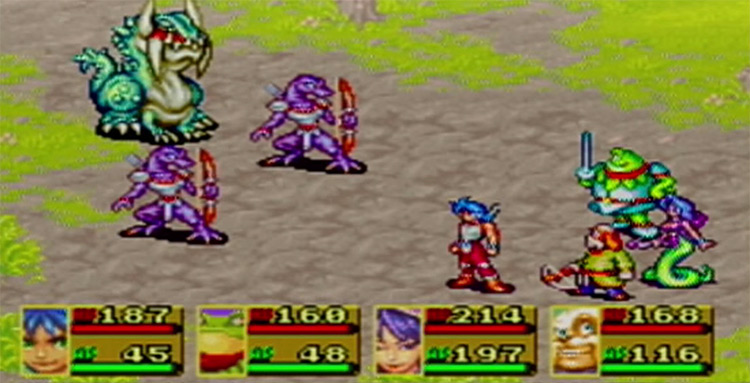
Of course, the same goes for the second installment in Capcom’s Breath of Fire, which features a much better story than the first game.
Following Dragon shapeshifter Ryu on his quest to find his missing family and learn about his draconic heritage makes you feel invested in the story and its characters deeply.
One of this game’s most helpful additions to the BoF formula is the Monster Meter, which gives you an idea of how likely you are from having a random encounter, letting you prepare accordingly.
16.
Summon Night: Swordcraft Story (2006)
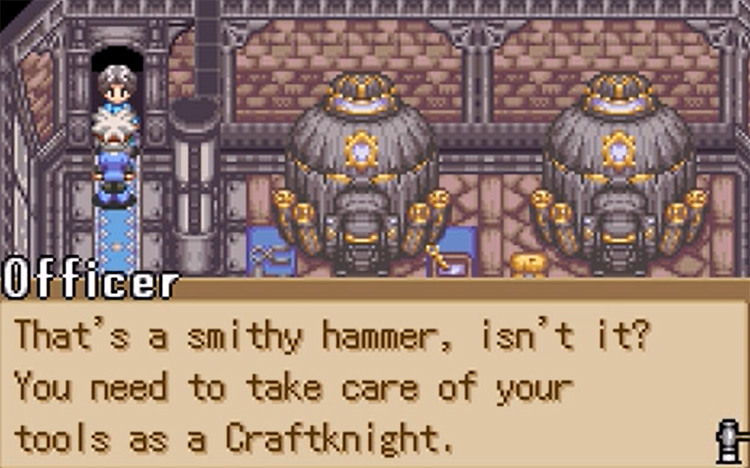
Developed by Flight-Plan, Swordcraft Story is a spin-off of the main Summon Night series focusing on weapon-crafting from both a gameplay and narrative perspective.
The story isn’t groundbreaking, but it’s a classic coming-of-age story that’s sure to entertain even younger audiences, which is probably why it’s so well-loved today.
It also lets players choose between a male and a female protagonist, which is always cool.
Keep in mind that a sharp mind or grindy tendencies won’t be enough to get through this action-RPG – you’ll also have to develop reflexes and learn to make your way around the 2D battle arenas.
15.
Summon Night Swordcraft Story 2 (2006)
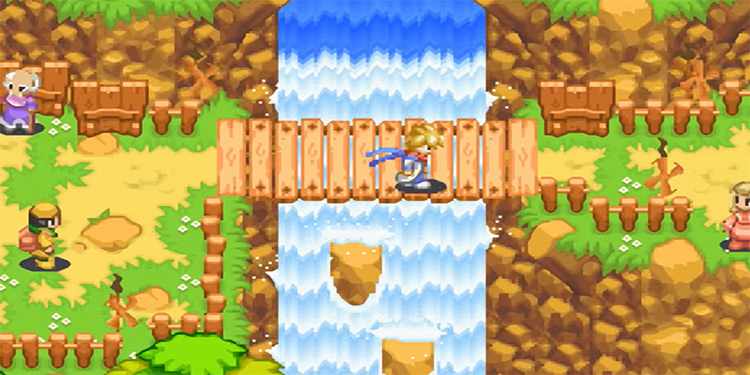
The second game in the spin-off series didn’t change much in terms of gameplay, but it looks even better than its predecessor, with a more vivid color scheme and sharper sprites.
Once again, you can choose your gender before you set off on your adventure as a Craftknight aspirant.
On the way you’ll meet charming characters, craft a truckload of weapons, and explore a few exciting locales that’ll stay in your memories for a while thanks to the magic of backtracking.
This game is much more about the journey than the goal. With a catchy soundtrack and lots of personality, you should find no trouble enjoying it to the fullest extent.
14.
Shining Force: Resurrection of the Dark Dragon (2004)
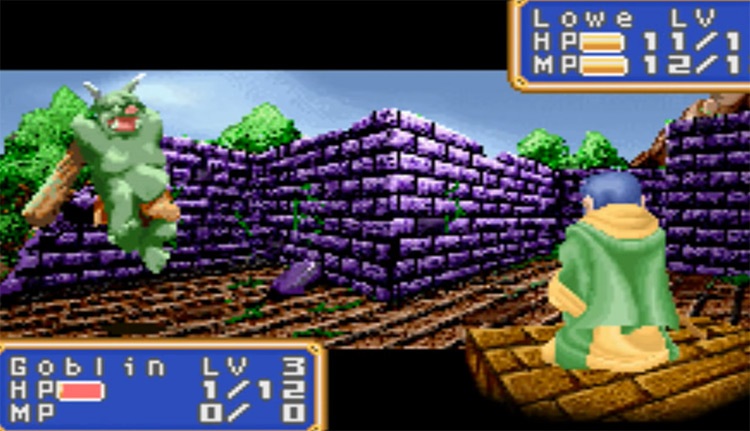
The original Shining Force was one of the most memorable JRPGs of the SEGA Genesis.
This enhanced version for the GBA was a total treat for longtime fans, while also introducing new audiences to the iconic title.
With an old-timey charm stemming from the remarkably standard fantasy storyline and the sprites that walk in place, this game immerses you in an era long gone.
In terms of gameplay, this Tactical RPG has a lot in common with Fire Emblem.
And it can get pretty tough as the game goes on.
13.
Mario & Luigi: Superstar Saga (2003)
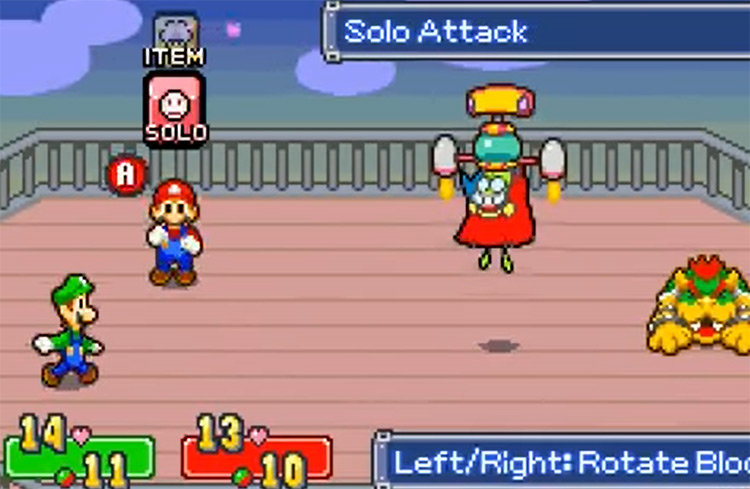
Developed by AlphaDream under Nintendo’s watchful eye, Mario & Luigi: Superstar Saga delivers a fast-paced, action-packed experience unlike anything in the genre.
While it can get pretty challenging, the game doesn’t expect you to spend hours upon hours battling the same damage-sponge enemies.
Instead, you’re meant to focus on exploration and puzzle-solving with a variety of tools.
It’s an excellent entry-point to the classic RPG genre for anyone who’s not used to them, and even if that doesn’t click, it’s still full of mini-games and other activities that make for a fun time.
12.
Tactics Ogre: The Knight of Lodis (2002)
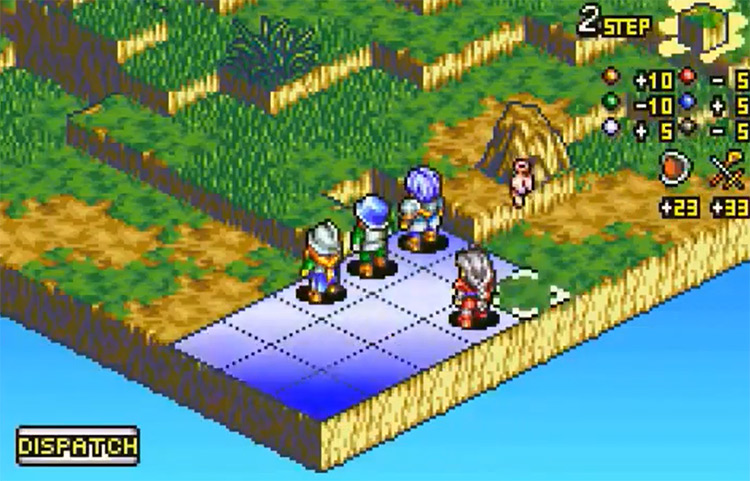
I go crazy at anything with “Tactics” in the genre, and Tactics Ogre: The Knight of Lodis only made that love deeper when I first played it.
The tale of this Knight of Lodis who abandons and opposes his former organization after finding out of their atrocities in the land of Ovis is not only gripping and inspiring, but relevant to this day.
While the story is what got me hooked, the gameplay is also excellent.
The possibility of persuading enemies to join your cause in the middle of battle adds a lot of complexity to these encounters, and the highly customizable units meant no two games were the same.
11.
Sword of Mana (2003)
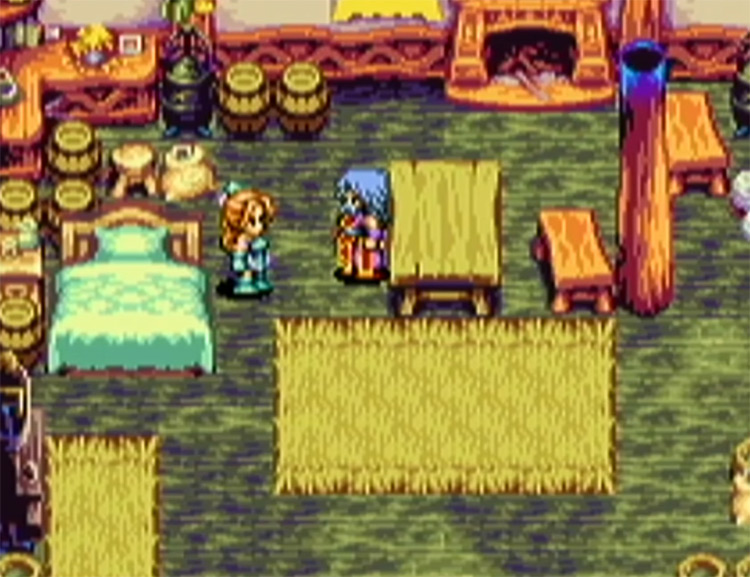
Square Enix’s “Mana” series is among the most prolific RPG franchises around, as well as one of the most long-lived.
This remake of the first game in the franchise lets players experience the title that started it all without the hassles of obsolete systems. Plus, it looks gorgeous on the GBA.
It has a simple high fantasy story that follows an unnamed hero on their quest to defeat the Dark Lord and save the Mana Tree.
The hack-and-slash combat is also easy to grasp but manages to remain challenging far into the game.
10.
Pokémon FireRed & LeafGreen (2004)
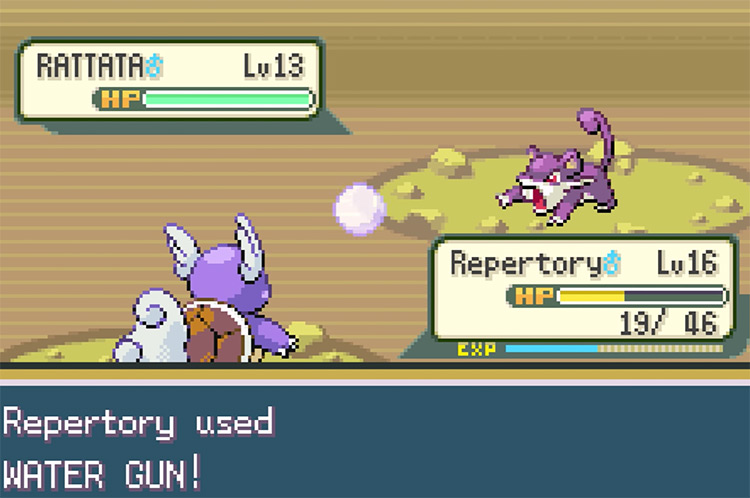
As I said before, the GBA was ripe with many remakes and re-releases for younger audiences to engage with the classics. Even Game Freak’s Pokémon Red & Blue got their own makeover.
Pokémon FireRed & LeafGreen let players relive the original adventure on the third-generation engine, significantly upgrading the graphics and even the combat system while leaving the narrative and characters mostly intact.
The game also adds nine new islands for players to explore, so even if you know the original inside-out, there are still some discoveries ahead.
Not to mention these gen 3 games have a ton of ROM hacks out there to re-live the experience in different ways.
9.
Pokémon Emerald (2005)
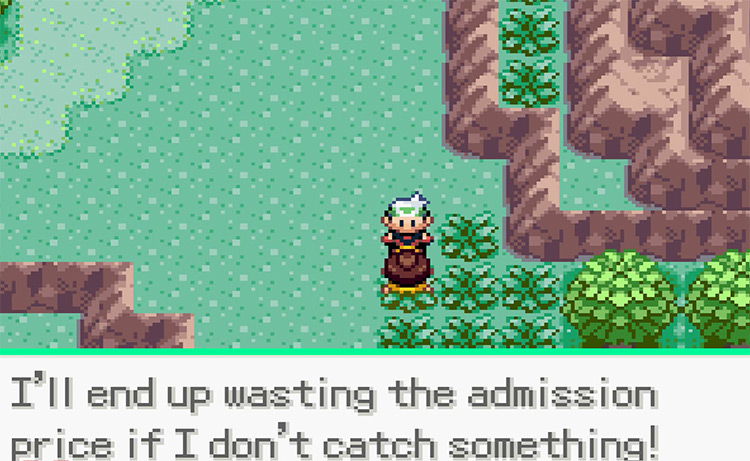
But even the substantial nostalgia value isn’t enough to make FireRed & LeafGreen better than the actual third generation of Pokémon games.
Especially Pokémon Emerald.
It’s the definitive version of Pokémon Ruby & Sapphire.
It features the powerful Rayquaza as the main legendary and introduces the incredible Battle Frontier, which catapulted the game’s replayability to new heights.
This generation added 2v2 battles, which are a staple of competitive play nowadays, and the Hoenn region is just a pleasure to explore.
8.
Final Fantasy Tactics Advance (2003)
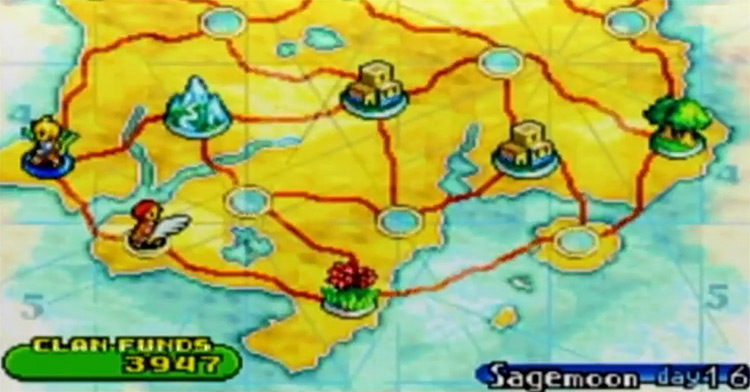
For some reason, grid-based isometric tactical RPGs tend to have graphics that tire the eye with ease, but Final Fantasy Tactics Advance shines for its colorful visuals that’ll keep your eyes from wandering.
The story follows a group of youngsters from the town of St. Ivalice who’re transported to a world of magic and fantasy after opening an ancient tome.
In this world of Ivalice, they’ll have to take up the sword and master the art of war to survive and find a way back home.
With a complex Job System that feels like a game in and of itself and the added difficulty of “Laws”, special restrictions present in most encounters, this game sets itself apart for the better.
7.
Riviera: The Promised Land (2005)
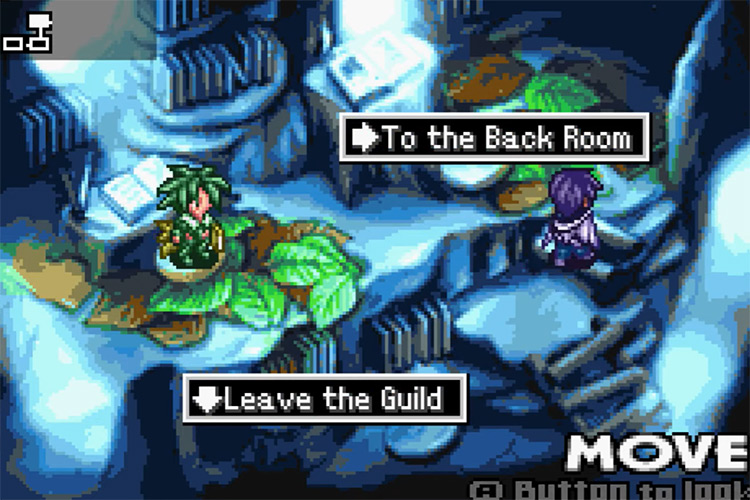
The first game of Spike’s Dept. Heaven series is Riviera, an unusual turn-based RPG that differentiates itself from others with its unique art style and somewhat bizarre storyline.
One of the game’s most interesting aspects is that it works as a sort of dating sim, where the main character can choose to woo anyone in his harem of party members by spending time with them and meeting specific criteria.
There’s also a port on the PSP with enhanced graphics and full voice-acting.
But if you’re in it for the gameplay, this is just as good.
6.
Final Fantasy VI Advance (2007)
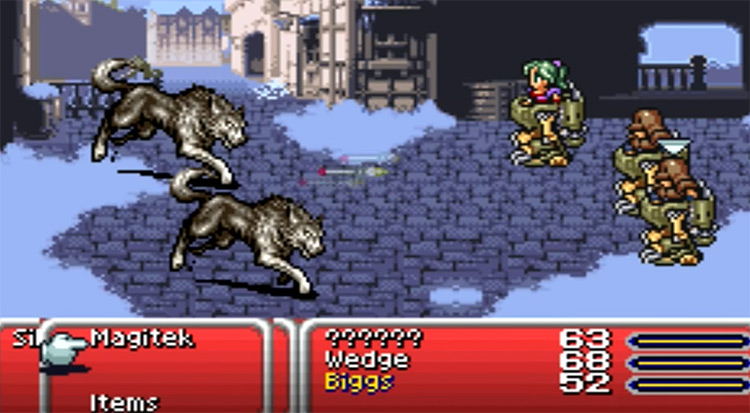
This 16-bit masterpiece of the RPG genre only improved with this GBA release, which includes a couple of new areas like the Dragon’s Den dungeon, new Espers, and slightly upgraded graphics.
Back when it first came out, FFVI was revolutionary, taking everything that had worked on the previous games and even other franchises and polishing it to a mirror sheen.
Part of what made it so impressive at the time is the depth of its characters and their dramas, which touch on themes like teenage pregnancy, use of chemical weapons in warfare, and life under a military dictatorship.
5.
Golden Sun (2001)
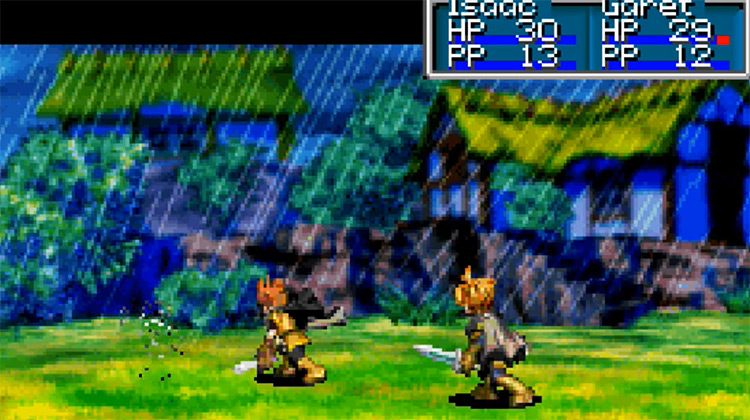
Golden Sun comes up in every discussion about the GBA’s library of games. And for a good reason.
Developed by Camelot Software Planning, this traditional turn-based RPG proved there was a market for incredibly deep, expansive storylines.
In fact, this game’s story is so long that it was split up into two games.
It backs up this fantastic narrative with striking visuals, including dynamic sprite-based cutscenes and flashy battles.
4.
Golden Sun: The Lost Age (2002)
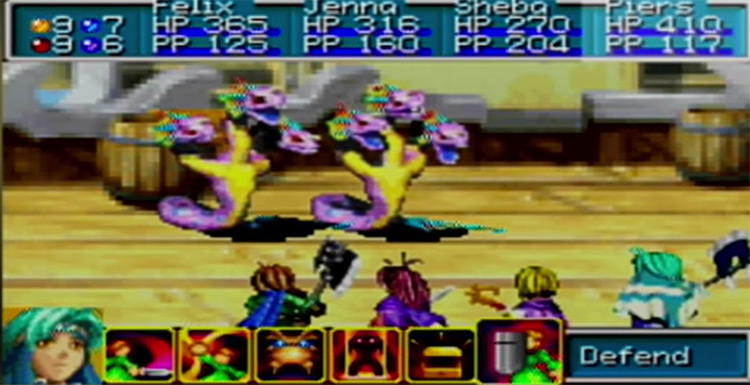
Picking up right where the original Golden Sun left off, The Lost Age follows a ragtag group of enemy survivors from the first game, who fight to accomplish what they failed to do in the original.
Experiencing the same story and conflict from two opposed perspectives opened my mind to what kinds of stories video games could tell.
Gameplay-wise, the game brings more of the same awesome puzzles and maze-like dungeons that made playing through the first one such an engaging experience.
3.
Fire Emblem: The Blazing Blade (2003)
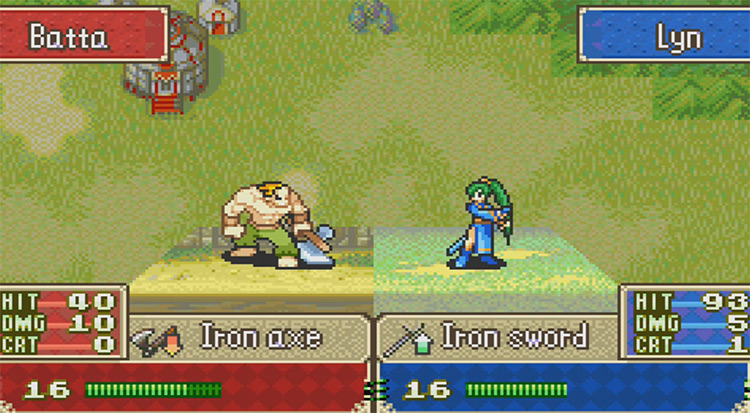
The seventh installment in the Fire Emblem series was also the first one to be released worldwide, bringing the fantastic tactical gameplay of the franchise to Western audiences.
It features three playable heroes and a solid fantasy storyline that doesn’t get too convoluted, focusing instead on the fantastic characters and well-written dialogue.
Coupled with fantastic visuals and well-designed scenarios, this made The Blazing Blade into one of the most influential titles of the decade.
2.
Kingdom Hearts: Chain of Memories (2004)
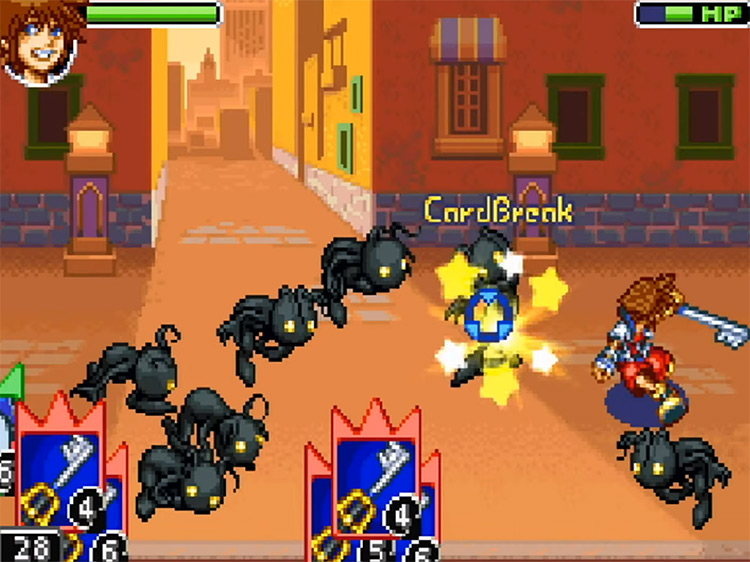
I’d say now could be the perfect time to look back at the history of KH and maybe try playing Kingdom Hearts: Chain of Memories on the GBA.
It’s a prequel for KH2 that follows Sora, Donald, and Goofy as they explore Castle Oblivion in a bid to find their friends.
Other than the unique card-based battle system, this game features a room-synthetizing mechanic that lets players influence everything from mob strength to the appearance of a Save spot in a newly generated area.
It’s definitely one of the main reasons to own a GBA.
If you can get past the card battle stuff (and older graphics) you’ll have a blast with this title.
1.
Fire Emblem: The Sacred Stones (2005)
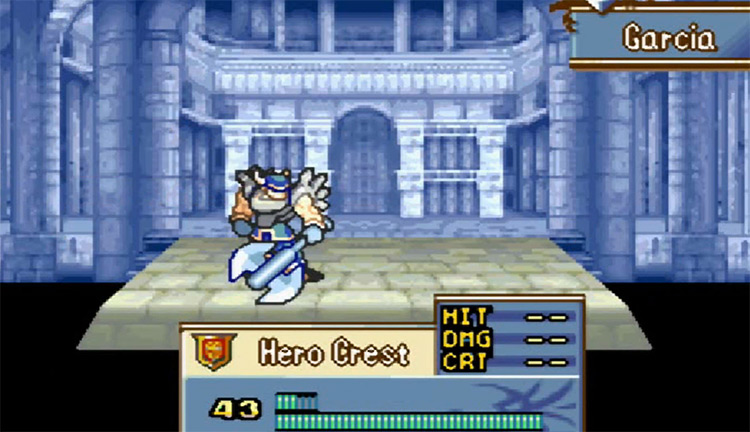
Fire Emblem: The Blazing Blade may have been the first Fire Emblem to make it out of Japan, but it wasn’t the best on the GBA.
That honor goes to The Sacred Stones, which plays mostly the same but features a much better story with a compelling argument and excellent pacing.
Being able to choose from a male and female main character at the beginning of the game adds some replayability.
It also substantially improves the visuals and features some challenging scenarios that make it a great GBA RPG, and one of the best Fire Emblem games ever.











